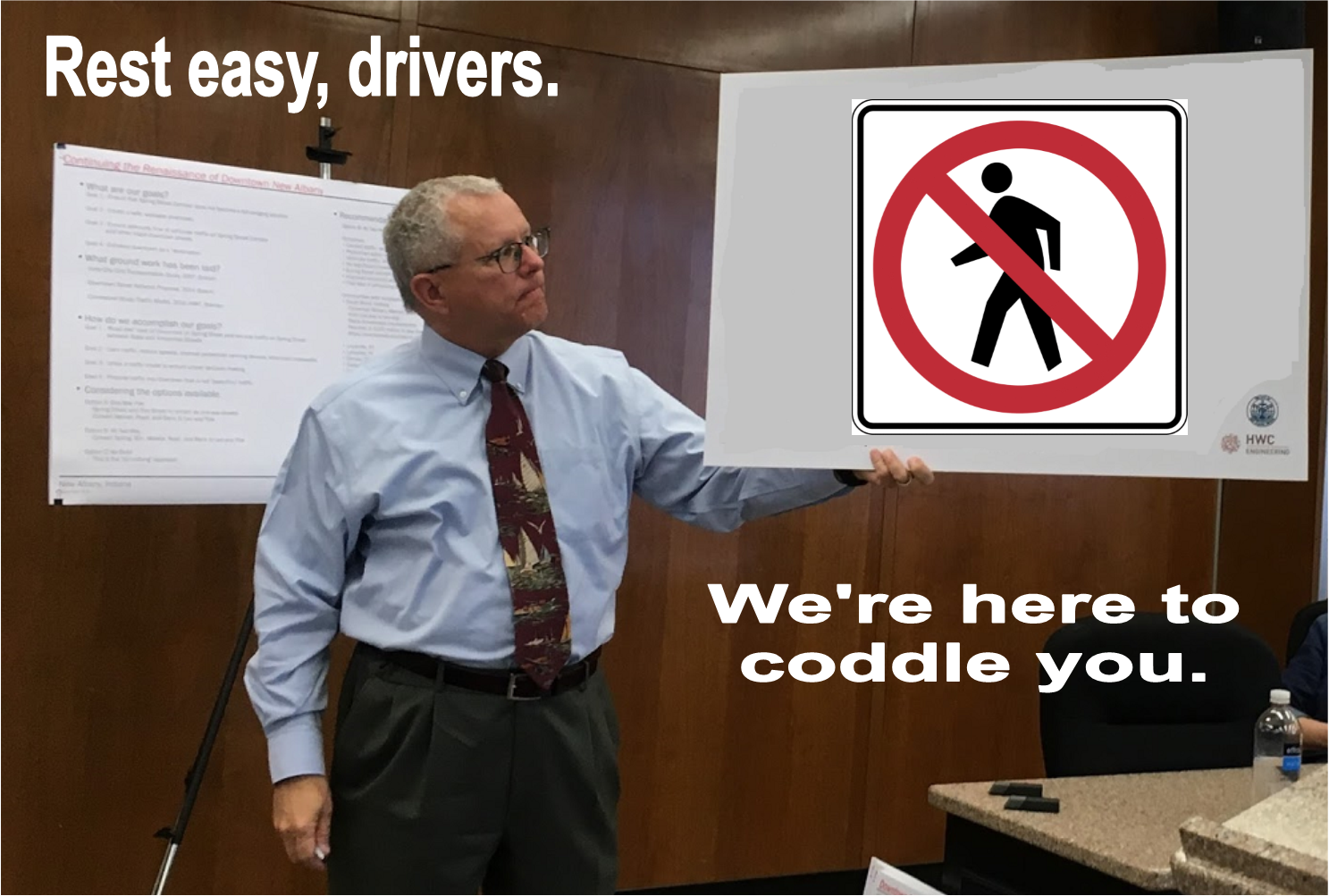
Just think about all those times when the bored of works enumerated the many splendid reasons why they couldn’t (read: wouldn’t) help make our streets safe.
Just think about city engineer Larry Summers’ passive-aggressive protests — but traffic flow, but INDOT, but whatever else springs to an obstructionist’s mind.
Just think about how different it would be if their first response wasn’t “here’s why we can’t and won’t help” but “we’ll find a way to help.”
Just think if the latter resolve constituted Jeff Gahan’s instructions to pliant super-sized campaign donors like HWC Engineering, rather than using HWC as a shield to defend the veneer salesman’s preference for our car-centric status quo.
Just think if Greg Phipps had the chutzpah to disagree with his cash-stuffed overlord and insisted on trying to make the situation better, rather than meekly accepting the status quoin the name of non-democratic Democrats.
We’ll stop there. After all, “just thinking” is precisely what they’re not doing.
#FireGahan2019
#FlushTheClique
#DrainTheSwamp
The Stark Traffic Safety Divide, by Sarah Holder (CityLab)
Pedestrians fatalities are rising sharply as Americans spend more time behind the wheel. And self-driving technology isn’t likely to be the fix we need.
In some ways, the crash that killed pedestrian Elaine Herzberg in Tempe, Arizona, last year, was a typical distracted-driving incident, with a cruel high-tech twist: As Herzberg walked her bike across the road in the dark of night, the driver of the Volvo SUV hurtling toward her was streaming an episode of The Voice on her cell phone.
But the driver wasn’t the only operator that was distracted: The car was part of Uber’s fleet of self-driving test vehicles, racking up miles in computer control mode. Its many sensors should have recognized the pedestrian obstacle in its path and avoided the collision. Instead, the SUV’s operating system kept right on driving; and the human driver failed to intervene. Herzberg was fatally injured, and died in the hospital.
This week, at least one chapter of the long legal battle that ensued against Uber—which made the self-driving technology that powered the car—closed, when an Arizona prosecutor ruled that the company was not criminally liable for Herzberg’s death. The driver may still face manslaughter charges.
The Tempe case was so high-profile in part because it was historic—the first recorded case of a pedestrian killed by an autonomous vehicle, a long-dreaded industry milestone that threatened to confirm the public’s worst fears about self-driving technology.
But the coverage of the incident may have obscured a larger tragedy: That every day in the U.S., pedestrians like Herzberg are being killed by regular drivers at a staggering rate. And though autonomous vehicles promise to eventually replace humans at the wheel—and eventually, promoters of this technology insist, make the streets safer—right now pedestrians are being killed and injured by motorists at the highest rate in decades.











